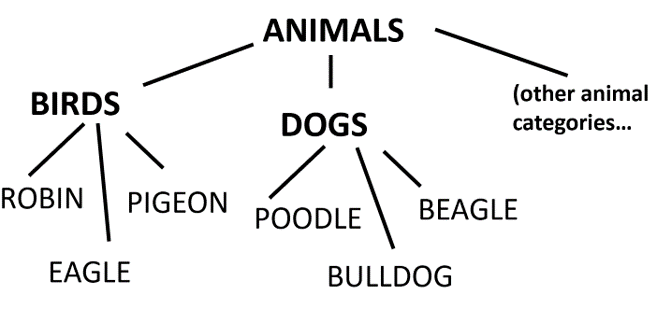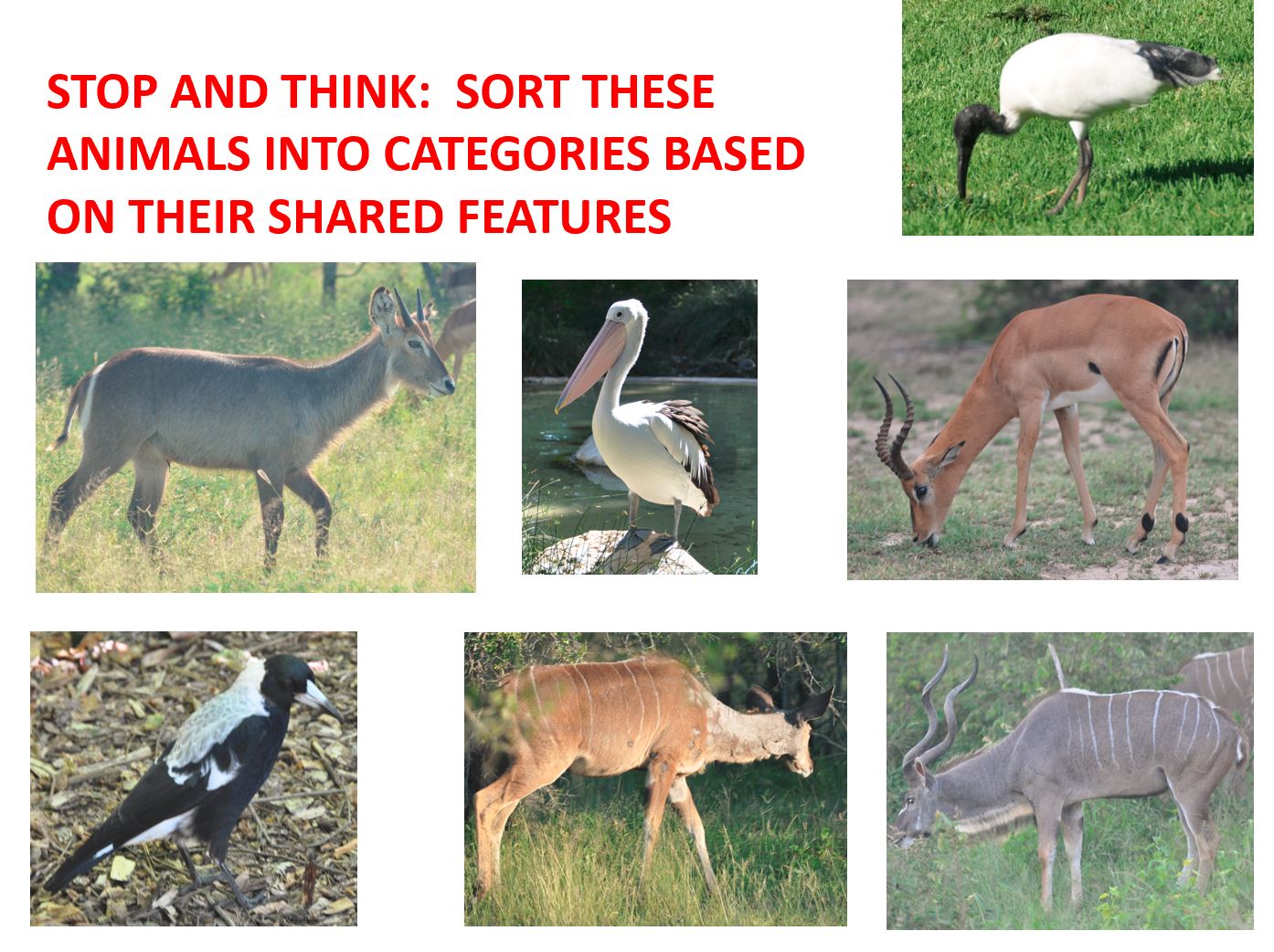44 “Natural” Categories and “Carving Nature at the Joints”
We have seen that categories can be organized in a hierarchy or taxonomy like this one, with broad and abstract categories being sub-divided over and over to create narrower ones.
In this lesson you will learn another important idea about organizing … that some organizing systems seem more natural than others in the way in they divide things into categories.
Let’s assume you have a pet bulldog like the one in the photo and his name is DUKE. He would show up in the hierarchy along with other individual bulldogs with a line connecting him to the BULLDOG category.
Here are four different ways you could describe the animal in the photo. Every one of these descriptions is accurate, but they differ in the level of abstraction of the described category.

-
This is an ANIMAL
-
This is a DOG
-
This is a BULLDOG
-
This is DUKE
When you read those descriptions, you might have thought that some levels of abstraction seem more natural than others. Imagine that you are going to take Duke for a walk. You would probably say “I am taking the dog for a walk” or “I am taking Duke for a walk.” It sounds a little odd to say “I am taking the animal for a walk” or “I am taking the bulldog for a walk. ”
There’s a good reason for this feeling that some abstraction levels of categories are more natural than others. The members of the ANIMAL category differ a great deal. BIRDS and DOGS have almost no properties in common. On the other hand, while there are many types of BIRDS and DOGS, all of the types of BIRDS have a lot in common – they have feathers and beaks, and almost all of them fly. This cluster of properties distinguishes birds from other categories of animals. Likewise, all DOGS have many shared properties that distinguish them as a category.
Put another way, a system of categories seems natural when all of the members of a category have a lot of shared properties with each other, but few or no properties with members of other categories. So you probably think of DUKE as a dog a lot more often than you think of him as a bulldog.
This idea that clusters of properties that go together create category boundaries is a very old one. Over 2000 years ago the philosopher Plato argued that species are distinguished by “carving nature at its joints” – where the differences between things are the largest or most apparent. Let’s stop and think about this and see if you can carve up some animal categories.
Don’t go on to the next lesson until you have finished “category carving.” It is up to you to decide how many categories to create.




